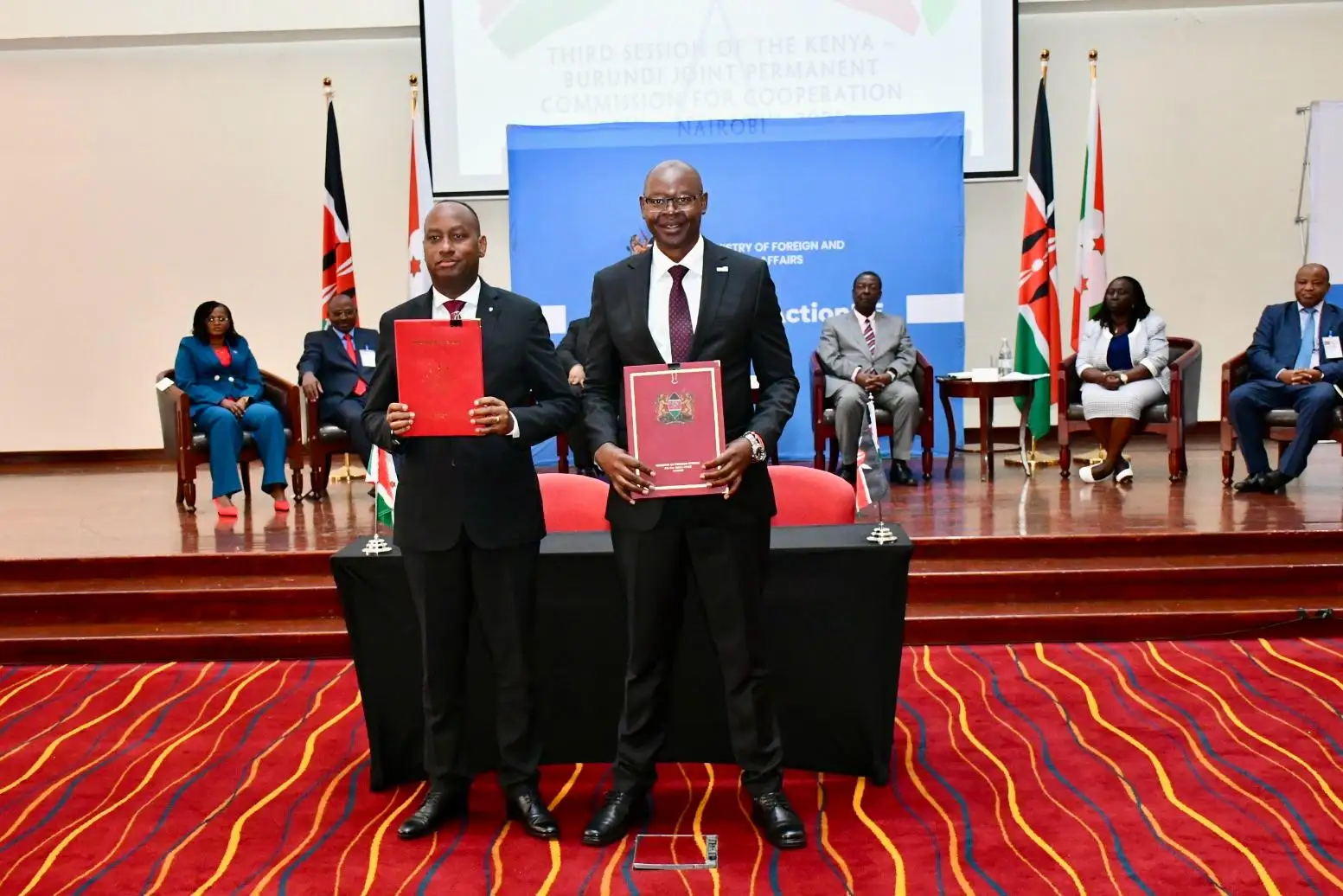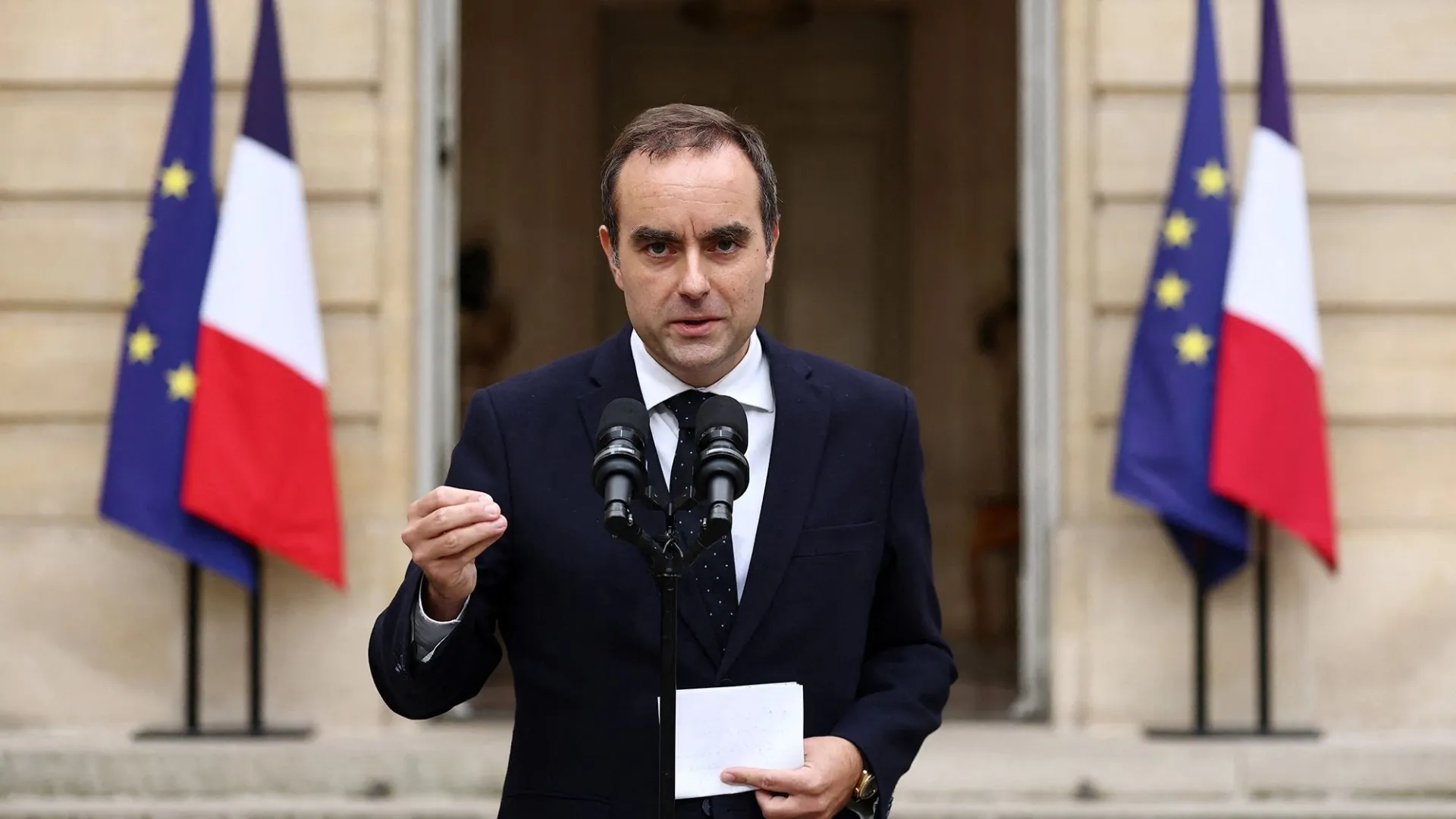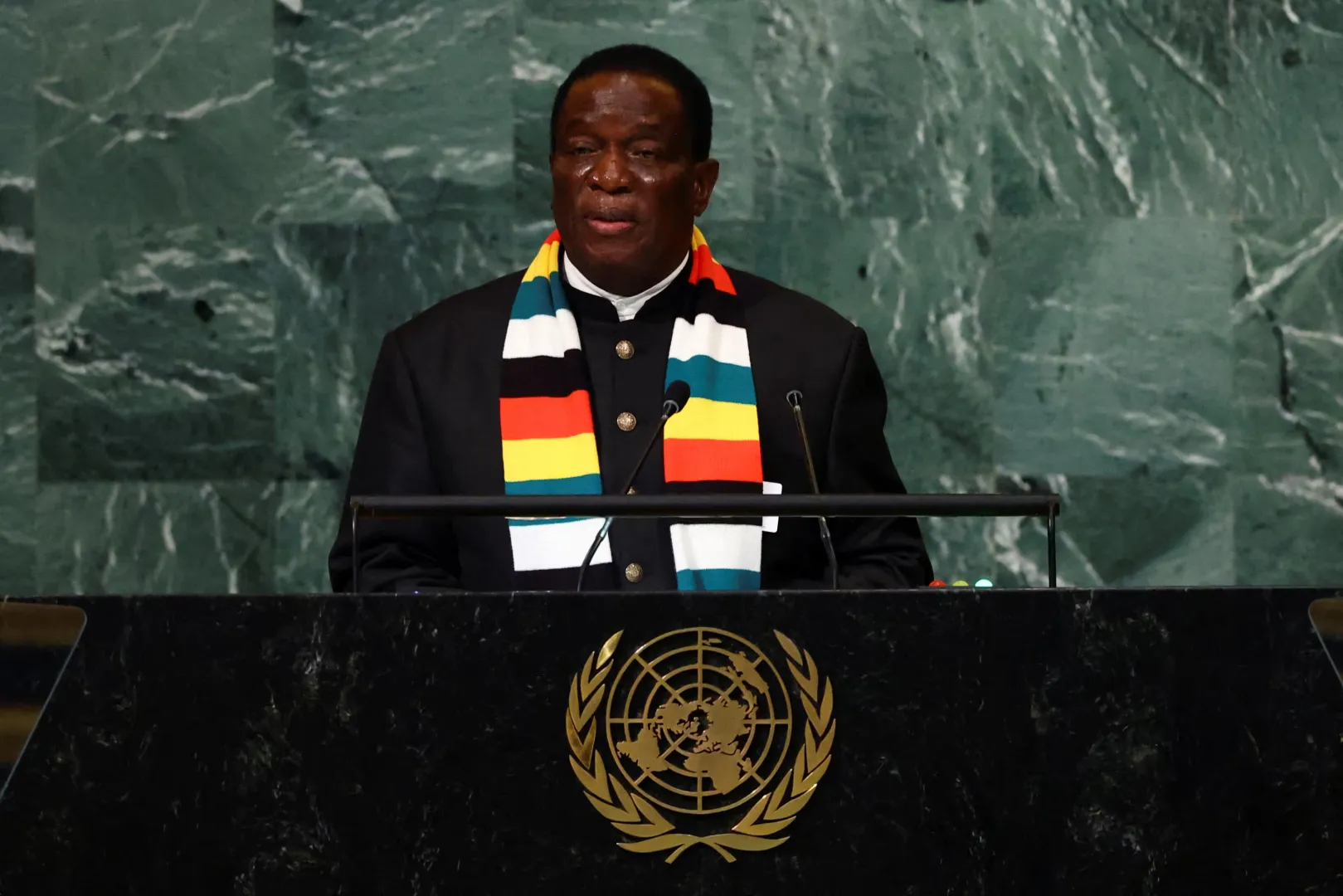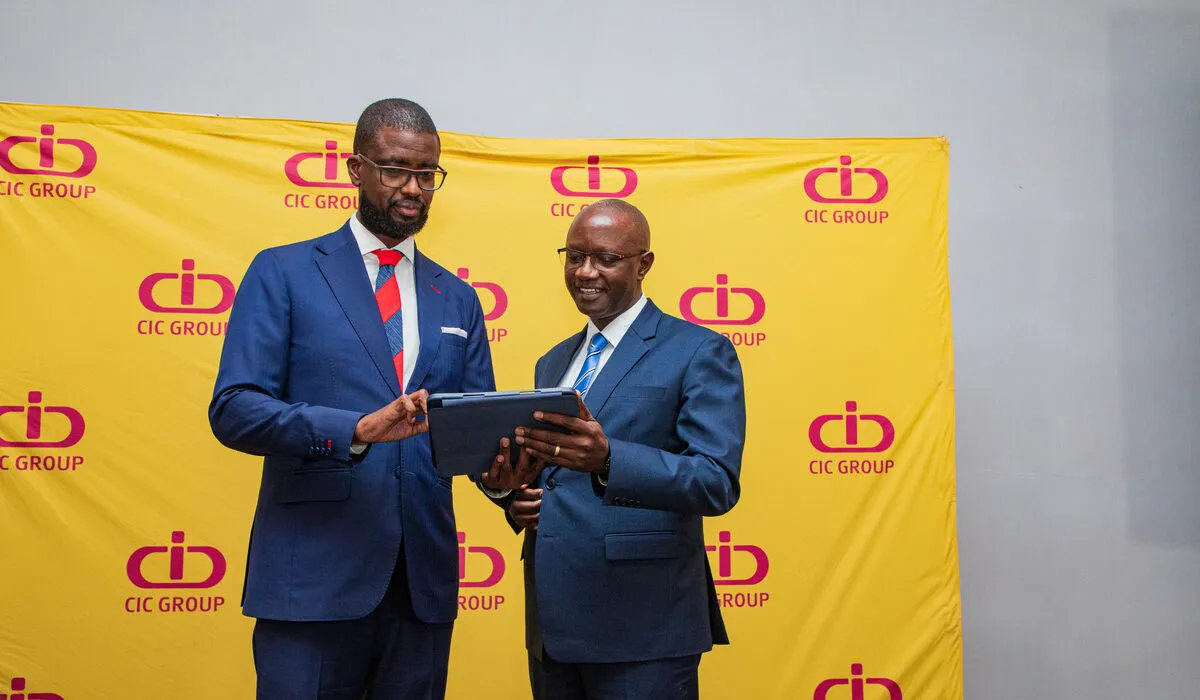Kenya and Burundi have reaffirmed their commitment to deepening economic collaboration by enhancing bilateral trade, expanding cross-border investment, and strengthening regional cooperation, as East and Southern African leaders convene in Nairobi for the 24th Common Market for Eastern and Southern Africa (COMESA) Summit of Heads of State and Government.
The renewed economic partnership was announced by Kenya’s Cabinet Secretary for Investments, Trade, and Industry, Lee Kinyanjui, following bilateral discussions with Burundi’s Minister for Mineral Resources, Energy, Industry, Trade and Tourism, Hassan Kibeya, on the sidelines of the high-profile regional summit currently underway in the Kenyan capital.
The meeting between the two ministers focused on identifying concrete opportunities to expand business relations and deepen institutional cooperation between the two East African neighbours, building on existing frameworks that already facilitate movement of people and goods across their shared border.
Build the future you deserve. Get started with our top-tier Online courses: ACCA, HESI A2, ATI TEAS 7, HESI EXIT, NCLEX-RN, NCLEX-PN, and Financial Literacy. Let Serrari Ed guide your path to success. Enroll today.
Bilateral Talks Focus on Trade and Investment Expansion
Cabinet Secretary Kinyanjui provided details of the substantive discussions in a statement shared on social media platform X, emphasizing the strategic importance of the Kenya-Burundi economic relationship within the broader regional integration agenda.
“This afternoon, on the sidelines of the COMESA Summit of Heads of State and Government, I held bilateral talks with Dr Hassan Kibeya, Burundi’s Minister for Mineral Resources, Energy, Industry, Trade & Tourism,” Kinyanjui wrote. “Our two countries enjoy longstanding relations, anchored by the free movement of people. We explored ways to deepen this partnership by enhancing trade, expanding investment opportunities, and strengthening economic ties for mutual growth.”
The emphasis on “mutual growth” signals Kenya’s recognition that regional prosperity depends on ensuring that economic integration benefits all participating nations equitably, rather than concentrating gains in larger or more developed economies. This inclusive approach to regional cooperation has become increasingly important as African nations seek to maximize benefits from continental and regional trade agreements.
The meeting comes as both countries seek to leverage their membership in multiple overlapping regional economic communities—including COMESA, the East African Community (EAC), and for Kenya, participation in various continental initiatives—to expand market access for their exports and attract investment in priority sectors.
Kenya-Burundi Economic Relations: Current State and Potential
Kenya and Burundi share historical, cultural, and economic ties that have evolved significantly over recent decades. Kenya serves as a critical economic gateway for landlocked Burundi, providing access to the Port of Mombasa—East Africa’s largest seaport and a vital trade corridor connecting the region to global markets.
The Northern Corridor, a major transportation route linking Mombasa through Kenya to Uganda, Rwanda, Burundi, and beyond, serves as the primary conduit for Burundi’s international trade. This infrastructure dependence creates natural incentives for Kenya and Burundi to maintain strong economic cooperation and ensure efficient movement of goods across their shared border.
Trade between the two nations has grown steadily in recent years, though it remains modest compared to Kenya’s trade volumes with larger regional partners like Uganda and Tanzania. Kenya primarily exports manufactured goods, agricultural products, petroleum products, pharmaceuticals, and consumer goods to Burundi, while importing minerals, agricultural commodities, and other raw materials.
However, significant untapped potential exists for expanding bilateral trade and investment. Burundi possesses substantial mineral resources, including nickel, cobalt, copper, and rare earth elements, that could attract Kenyan investment in mining and mineral processing. Meanwhile, Kenya’s more diversified and sophisticated economy offers opportunities for Burundian businesses to access technology, financial services, logistics expertise, and manufactured inputs.
The free movement of people between the two countries—facilitated by their shared membership in the East African Community—has created vibrant cross-border communities and informal trade networks that contribute significantly to local economies along the border region. Formalizing and supporting these economic relationships could unlock additional growth opportunities.
COMESA at 30: Celebrating Three Decades of Regional Integration
The bilateral discussions between Kenya and Burundi unfolded against the backdrop of COMESA’s 30th anniversary celebrations, marking three decades since the regional bloc was formally established to promote economic integration and development across Eastern and Southern Africa.
On Wednesday, October 8, 2025, Kenyan President William Ruto hosted a high-level dinner at State House in Nairobi to commemorate this milestone. The event brought together heads of state, government ministers, and senior officials from across the continent to celebrate COMESA’s achievements and chart its future direction.
COMESA, which currently comprises 21 member states spanning a vast geographic area from Libya in the north to Zimbabwe in the south, represents one of Africa’s most ambitious regional integration projects. With a combined population exceeding 580 million people and a collective GDP of approximately $800 billion, the bloc wields considerable economic influence and potential.
The organization’s achievements over three decades include significant progress in reducing tariff barriers, harmonizing customs procedures, facilitating cross-border payments, promoting infrastructure development, and creating platforms for policy coordination among member states. The COMESA Free Trade Area, launched in 2000, eliminated tariffs on goods traded among participating member states, significantly boosting intra-regional commerce.
President Ruto’s Vision: Digital Transformation as Africa’s Next Frontier
During the anniversary celebrations, President Ruto articulated a forward-looking vision that positions digital innovation as the next frontier for African economic transformation. His remarks emphasized that while COMESA has achieved significant progress over three decades, the bloc must now embrace technological change to unlock the continent’s next phase of development.
“We celebrate 30 years of the Common Market for Eastern and Southern Africa (COMESA), a transformative regional bloc that has powered integration across our region,” President Ruto stated during the State House dinner. “We take pride in our journey of resilience and partnership, which has expanded markets, created opportunities, and strengthened our unity in confronting challenges.”
Ruto’s emphasis on “resilience” acknowledges the numerous obstacles COMESA has overcome during its three-decade history, including political instability in various member states, infrastructure deficits, inconsistent policy implementation, and external economic shocks ranging from commodity price volatility to the COVID-19 pandemic.
The Kenyan president underscored that digital transformation would be central to Africa’s economic future, enabling countries to increase trade efficiency, create employment opportunities in emerging sectors, and improve public sector governance through technology-enabled transparency and accountability.
“At the 24th COMESA Summit of Heads of State, we will deliberate on the need to drive change to shape the next phase of Africa’s transformation through digital technology,” Ruto wrote on X, previewing key themes that would dominate summit discussions.
Digital Innovation: Kenya’s Track Record and Regional Leadership
President Ruto’s emphasis on digital transformation builds on Kenya’s established reputation as East Africa’s technology hub. The country has pioneered mobile money innovation through M-Pesa, developed a thriving technology startup ecosystem centered in Nairobi’s Silicon Savannah, and made significant investments in digital infrastructure including fiber optic networks and data centers.
Kenya’s Digital Economy Blueprint, launched in recent years, aims to position the country as a globally competitive digital economy by expanding broadband connectivity, promoting digital literacy, supporting technology entrepreneurship, and digitizing government services. These initiatives provide practical examples that other COMESA member states can study and potentially adapt to their own contexts.
The Kenyan government has also invested heavily in digital government services through the eCitizen platform, which allows citizens to access hundreds of government services online, reducing bureaucracy, minimizing corruption opportunities, and improving service delivery efficiency. This experience positions Kenya to share valuable lessons with regional partners seeking to modernize their own public administration systems.
Within COMESA’s context, digital transformation offers multiple potential benefits. Enhanced digital infrastructure could dramatically reduce the time and cost of cross-border transactions, making intra-regional trade more competitive. Digital platforms could connect small and medium enterprises across member states, facilitating export opportunities that would otherwise remain inaccessible to businesses lacking international networks.
Digital payment systems could reduce reliance on correspondent banking relationships that have become increasingly difficult to maintain, particularly for smaller African banks. Blockchain technology and digital trade documents could streamline customs procedures and reduce opportunities for corruption at border crossings—a persistent obstacle to regional trade integration.
One decision can change your entire career. Take that step with our Online courses in ACCA, HESI A2, ATI TEAS 7, HESI EXIT, NCLEX-RN, NCLEX-PN, and Financial Literacy. Join Serrari Ed and start building your brighter future today.
COMESA’s Economic Impact: Progress and Persistent Challenges
Over its 30-year history, COMESA has achieved notable successes in promoting regional economic integration, though significant challenges remain. Intra-COMESA trade has grown substantially since the bloc’s formation, with member states increasingly trading with each other rather than relying exclusively on traditional markets in Europe, North America, and Asia.
The COMESA Free Trade Area, which includes most but not all member states, has eliminated tariffs on qualifying goods traded among participants. This tariff elimination has made regional products more price-competitive and encouraged businesses to explore regional market opportunities.
COMESA has also made progress in harmonizing trade documentation and customs procedures through initiatives like the COMESA Yellow Card, a regional motor vehicle insurance scheme that facilitates cross-border transport by eliminating the need for separate insurance policies in each country. Such practical initiatives address concrete obstacles that previously hindered regional commerce.
However, significant barriers to deeper integration persist. Non-tariff barriers—including inconsistent regulations, burdensome customs procedures, roadblocks and checkpoint harassment, arbitrary administrative requirements, and corruption—continue to impede trade flows despite formal tariff elimination. Studies by trade policy researchers consistently identify these non-tariff barriers as more significant obstacles than tariffs themselves.
Infrastructure deficits also constrain regional integration. While major transport corridors like the Northern Corridor have received substantial investment, many border crossing points remain inadequately equipped, rural road networks are often poor, railway infrastructure is underdeveloped or non-functional, and electricity and telecommunications infrastructure varies dramatically across member states.
Political commitment to regional integration has sometimes wavered, with member states occasionally prioritizing narrow national interests over collective regional benefits. Implementation of agreed policies has been inconsistent, with some member states more enthusiastic and effective than others in translating COMESA commitments into domestic legislation and administrative practice.
The African Continental Free Trade Area Context
COMESA’s evolution occurs within the broader context of the African Continental Free Trade Area (AfCFTA), which launched in 2021 and aims to create a single continental market for goods and services. The AfCFTA represents perhaps the most ambitious economic integration project globally, potentially uniting 1.3 billion people across 54 countries with a combined GDP exceeding $3 trillion.
Regional Economic Communities like COMESA serve as building blocks for the continental free trade area, with the expectation that strengthening regional integration will facilitate broader continental integration. However, this creates coordination challenges, as most African countries belong to multiple overlapping regional organizations with sometimes inconsistent rules and requirements.
Kenya and other COMESA members are working to harmonize their regional commitments with continental obligations under AfCFTA, seeking to ensure that regional integration efforts reinforce rather than undermine the broader continental project. This requires careful policy coordination and creative institutional arrangements that allow different integration initiatives to complement each other.
Trade and Investment: Mutual Benefits for Kenya and Burundi
The renewed commitment between Kenya and Burundi to strengthen economic ties reflects recognition that both countries stand to benefit from deeper cooperation. For Kenya, stronger ties with Burundi contribute to its broader ambition to position itself as East Africa’s commercial and logistics hub, serving as the gateway through which landlocked neighbors access global markets.
Enhanced economic cooperation with Burundi also supports Kenya’s export competitiveness by expanding market access for Kenyan manufacturers, agricultural processors, and service providers. As Kenya implements its Bottom-Up Economic Transformation Agenda, which emphasizes value-addition and manufacturing, regional markets become increasingly important for providing the scale necessary to justify investments in productive capacity.
For Burundi, deeper economic engagement with Kenya offers access to more sophisticated financial services, technology platforms, logistics expertise, and a wider range of manufactured inputs that can support Burundi’s own development ambitions. Kenya’s experience with mobile money, digital government services, agricultural technology, and other innovations provides potentially valuable lessons and partnership opportunities.
Burundi’s mineral resources represent a particularly promising area for bilateral cooperation. The country possesses significant deposits of nickel, cobalt, and rare earth elements—minerals that are increasingly valuable in manufacturing batteries, electronics, and renewable energy technologies. Kenyan investment in Burundi’s mining sector, potentially combined with Kenyan expertise in logistics and finance, could help Burundi develop these resources more effectively.
Regional Security and Economic Stability Linkages
The Kenya-Burundi bilateral relationship extends beyond purely economic considerations to encompass security cooperation and political stability concerns. Both countries have contributed troops to peacekeeping operations in the region, including the African Union Mission in Somalia (AMISOM), now transitioned to the African Union Transition Mission in Somalia (ATMIS).
This security cooperation creates shared interests in maintaining regional stability, as economic integration depends fundamentally on peaceful conditions that allow goods, services, and people to move safely across borders. The destabilizing effects of conflict, whether in Somalia, South Sudan, or elsewhere in the region, create negative spillovers that affect all neighboring countries through refugee flows, disrupted trade routes, and diverted resources.
Economic development and regional integration can reinforce peace and stability by creating mutual dependencies and shared prosperity that increase the costs of conflict. As Kenya and Burundi deepen their economic ties, both countries develop stronger incentives to maintain peaceful relations and cooperate on security challenges.
Infrastructure: The Foundation for Enhanced Trade
Realizing the full potential of Kenya-Burundi economic cooperation will require continued investment in transportation, energy, and communications infrastructure that physically connects the two countries and reduces the transaction costs of cross-border commerce.
The Northern Corridor remains the primary economic artery linking the two nations, but continued improvements are necessary. Ongoing investments in Standard Gauge Railway infrastructure, if extended through to Uganda and eventually to Rwanda and Burundi, could dramatically reduce transport costs and transit times compared to road transport.
Border infrastructure improvements, including modern customs facilities, efficient cargo handling equipment, and streamlined documentation procedures, can significantly reduce delays and costs associated with cross-border trade. Digital integration of customs systems, allowing electronic submission of documents and advance processing of shipments, represents particularly high-impact investments given relatively modest financial requirements.
Energy infrastructure cooperation also offers opportunities, as Kenya’s more developed electricity generation capacity—including significant renewable energy from geothermal, wind, and solar sources—could potentially be exported to energy-deficit neighbors like Burundi through regional power pools and grid interconnections.
The Path Forward: From Commitments to Concrete Results
The bilateral discussions between Cabinet Secretary Kinyanjui and Minister Kibeya represent an important diplomatic moment, but translating high-level commitments into tangible economic results will require sustained follow-through at technical and operational levels.
Specific next steps might include establishing a joint business council to identify priority sectors for cooperation, organizing trade missions that introduce businesses from each country to opportunities in the other, negotiating memoranda of understanding on specific sectors like mining or agriculture, and creating facilitation mechanisms that help businesses navigate regulatory requirements and access financing for cross-border investments.
Both governments will also need to address practical obstacles that hinder bilateral trade, including border delays, inconsistent application of regulations, limited access to trade finance, and information gaps that prevent businesses from fully understanding opportunities in each other’s markets.
The COMESA framework provides useful institutional infrastructure for supporting bilateral cooperation, including mechanisms for dispute resolution, technical assistance programs, and platforms for policy dialogue. Leveraging these regional resources can amplify the impact of bilateral efforts.
Conclusion: Regional Integration as Africa’s Development Strategy
The renewed Kenya-Burundi economic partnership, celebrated on the margins of COMESA’s 30th anniversary, exemplifies the potential of regional integration to drive African development. By working together to expand trade, facilitate investment, and harmonize policies, African countries can create larger, more attractive markets that support industrialization, technology adoption, and inclusive economic growth.
President Ruto’s emphasis on digital transformation as the next frontier reflects growing recognition across Africa that technology offers pathways to leapfrog traditional development stages and address persistent challenges more effectively. As COMESA enters its fourth decade, embracing digital innovation while continuing to strengthen the fundamentals of physical infrastructure, policy harmonization, and political commitment will be essential for realizing the bloc’s full potential.
For Kenya and Burundi specifically, the coming years will reveal whether renewed commitments translate into measurable increases in trade volumes, investment flows, and shared prosperity—or whether they remain largely rhetorical. The stakes extend beyond bilateral relations to the credibility of African regional integration more broadly, as the continent seeks to prove that cooperation can deliver tangible benefits for citizens and businesses alike.
Ready to take your career to the next level? Join our Online courses: ACCA, HESI A2, ATI TEAS 7 , HESI EXIT , NCLEX – RN and NCLEX – PN, Financial Literacy!🌟 Dive into a world of opportunities and empower yourself for success. Explore more at Serrari Ed and start your exciting journey today! ✨
Track GDP, Inflation and Central Bank rates for top African markets with Serrari’s comparator tool.
See today’s Treasury bonds and Money market funds movement across financial service providers in Kenya, using Serrari’s comparator tools.
photo source: Google
By: Montel Kamau
Serrari Financial Analyst
9th October, 2025
Article, Financial and News Disclaimer
The Value of a Financial Advisor
While this article offers valuable insights, it is essential to recognize that personal finance can be highly complex and unique to each individual. A financial advisor provides professional expertise and personalized guidance to help you make well-informed decisions tailored to your specific circumstances and goals.
Beyond offering knowledge, a financial advisor serves as a trusted partner to help you stay disciplined, avoid common pitfalls, and remain focused on your long-term objectives. Their perspective and experience can complement your own efforts, enhancing your financial well-being and ensuring a more confident approach to managing your finances.
Disclaimer: This article is for informational purposes only and does not constitute financial advice. Readers are encouraged to consult a licensed financial advisor to obtain guidance specific to their financial situation.
Article and News Disclaimer
The information provided on www.serrarigroup.com is for general informational purposes only. While we strive to keep the information up to date and accurate, we make no representations or warranties of any kind, express or implied, about the completeness, accuracy, reliability, suitability, or availability with respect to the website or the information, products, services, or related graphics contained on the website for any purpose. Any reliance you place on such information is therefore strictly at your own risk.
www.serrarigroup.com is not responsible for any errors or omissions, or for the results obtained from the use of this information. All information on the website is provided on an as-is basis, with no guarantee of completeness, accuracy, timeliness, or of the results obtained from the use of this information, and without warranty of any kind, express or implied, including but not limited to warranties of performance, merchantability, and fitness for a particular purpose.
In no event will www.serrarigroup.com be liable to you or anyone else for any decision made or action taken in reliance on the information provided on the website or for any consequential, special, or similar damages, even if advised of the possibility of such damages.
The articles, news, and information presented on www.serrarigroup.com reflect the opinions of the respective authors and contributors and do not necessarily represent the views of the website or its management. Any views or opinions expressed are solely those of the individual authors and do not represent the website's views or opinions as a whole.
The content on www.serrarigroup.com may include links to external websites, which are provided for convenience and informational purposes only. We have no control over the nature, content, and availability of those sites. The inclusion of any links does not necessarily imply a recommendation or endorsement of the views expressed within them.
Every effort is made to keep the website up and running smoothly. However, www.serrarigroup.com takes no responsibility for, and will not be liable for, the website being temporarily unavailable due to technical issues beyond our control.
Please note that laws, regulations, and information can change rapidly, and we advise you to conduct further research and seek professional advice when necessary.
By using www.serrarigroup.com, you agree to this disclaimer and its terms. If you do not agree with this disclaimer, please do not use the website.
www.serrarigroup.com, reserves the right to update, modify, or remove any part of this disclaimer without prior notice. It is your responsibility to review this disclaimer periodically for changes.
Serrari Group 2025











